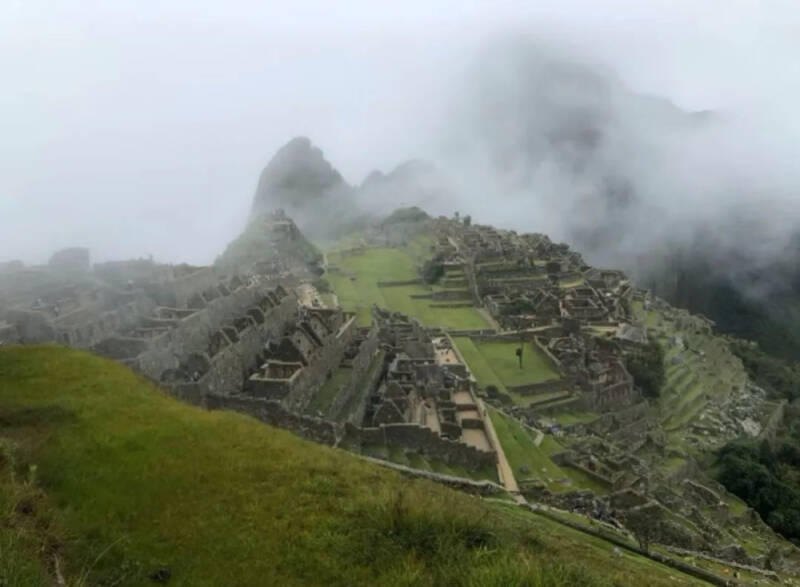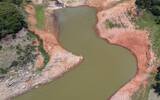What are the flavor characteristics of Peruvian coffee? How are coffee beans graded?
Latin American coffee has an important position in the global coffee market, all because its coffee production accounts for about 61% of the global coffee production, of which South America accounts for 50% of the coffee production. In South America, coffee cultivation is mainly concentrated in Colombia, Peru and Brazil, of which Brazil and Colombia are better known because Brazil is the world's largest coffee producer and Colombia is the world's third largest coffee producer. Peru is therefore relatively low-key, but it is rich in natural resources and can also produce high-quality coffee beans.
In Peru, the Andes range from north to south, with mountains accounting for 1% of the country's area. from west to east, the whole territory can be divided into the western coastal plain, the central mountain plateau and the eastern Amazon rainforest. Peru is in the tropics, but because of its complex geography and diverse climate, Peru has 28 different climates. Coffee is mainly grown in the central Andes, because it is located on the plateau and has a tropical mountain climate. It is rainy in summer, and the temperature and humidity will decrease with the increase of altitude. Coffee is mainly grown on the slopes of the central Andes, which have high-altitude mountains, volcanic soil and a changeable climate, creating an environment suitable for coffee growth.
Peru began to grow coffee as early as the 18th century, and it was an early American country to grow coffee, but early coffee was consumed domestically and did not begin to be exported until the early 20th century. Peruvian coffee cultivation is mainly small farmers, but the development has been slow due to the lack of economic and technical support, but most Peruvian coffee is grown under natural conditions, using natural fertilizers instead of chemical fertilizers, picking and selecting by hand. Later, the increased demand for coffee in the international community promoted the revival of Peruvian coffee production and made Peru one of the largest producers of organic coffee in the world.
Peru is divided into three coffee producing areas: the north, the central and the south. Among these coffee producing areas, the elevation is between 1000 and 1800 meters. The most famous coffee producing areas are Cajamarca in Cajamarca in the north, Junin in Junin in the middle and Cusco in Cusco in the south. The coffee produced by these coffee producing areas often appears on the list of Peruvian Excellence Cup COE.
At COE in Peru in 2023, Pedregal won fourth place with a score of 90.15 for washing Rose Summer. At present, the owner of Pedregal Manor is Abel Raymundo Arotaype Huayllas, and he manages the estate with his son. Pedregal Manor is located in the southern mountain area of Cusco. Although it is relatively remote, it is rich in resources.
Initially, the estate began to grow coffee in 2005, initially with Typica, Bourbon and Katim Catimor varieties, and later devoted to Geisha varieties. The manor is located at an altitude of 2240 meters above sea level. High altitude can delay the ripening time of coffee cherries and develop richer flavors. The local climate is tropical, humid, and the soil is rich in minerals. Coffee trees are planted in shade. There are many rich fruit trees nearby that can provide rich organic compost to market quality coffee.
In the Cusco producing area of Cusco in southern Peru, this is a historic city, formerly the capital of the ancient Inca empire, the region is mountainous, plateau, river and canyon, with the high mountains of Osangat (Ausangate), which is 6374 meters above sea level, and the Urubamba River, also known as the "Holy River", runs through the region and is rich in water resources. The climate here varies from place to place, the mountain climate is cool and the valley climate is hot, which has created a rich local coffee industry.

In Guilu, alpine beans are usually graded by altitude, and raw beans are graded by raw beans at middle and low elevations. The place of origin also uses the "number of defects" as the auxiliary classification, while the buyer uses the custom "cup test quality" as the assistant. Basically, the higher the altitude of the coffee tree, the harder the coffee beans will be. Mainly divided into Strictly High Bean (SHB) extremely hard beans, more than 1350 meters above sea level, and High Bean (HB) hard beans, between 1200 and 1350 meters above sea level.
For more information about coffee producing areas, please scan the code directly and follow: coffee comments.
Long press the QR code to follow:
Important Notice :
前街咖啡 FrontStreet Coffee has moved to new addredd:
FrontStreet Coffee Address: 315,Donghua East Road,GuangZhou
Tel:020 38364473
- Prev

Brazil's drought will last until 2025! The coffee industry was severely damaged
According to Brazilian media reports, in recent times, Brazil has experienced severe drought, resulting in frequent forest fires in Brazil, with serious impact. However, in recent days, a cold peak has formed in the south, which has temporarily alleviated the dry and hot weather in southern Brazil. However, the current cold peak is weakening and temperatures are rising again. currently
- Next

Take off your gown! Lucky is the first choice for graduate students!!
▲ Click to pay attention| Daily Boutique Coffee Culture Magazine Coffee Factory Recently, a post about joining Ruixing attracted the attention and discussion of many netizens. According to the poster, she is a master's degree student who just graduated this year and has worked in teaching and training for more than a month. Because I don't want to face the computer every day and make countless PowerPoint tables
Related
- What effect does Italian American coffee with filter paper have? Will coffee taste better if it is put on filter paper at the bottom of the powder bowl?
- What is the color difference in coffee beans? What are the characteristics of honey processed coffee beans? Why are the anaerobically treated coffee beans uneven in color?
- How does novice Xiaobai quickly get started and make coffee? Newbies learn to make coffee by hand and share the specific steps and process process!
- Costa tea has a shelf life of 100 years?! Expert: Unable to verify
- It's a huge uproar! American milk addition was rejected by Manner employees?!
- Mocha pot coffee bean recommendations| How fine and how much powder should be used for grinding? What parameter ratios do I need to use to make milk with Mocha pot coffee?
- What are the characteristics of the world's top ten coffee beans treated with Costa Rica honey? How to make black honey kadura from Tarazhu Pilon Processing Plant taste good?
- How to make deep-roasted coffee? What grinding water temperature does authentic Jamaica Blue Mountain No. 1 coffee use to brew it well?
- Selected high-grade rose summer coffee flavor tasting guide Why Panama rose summer has the aroma of flowers and fruits
- What equipment does a novice Xiaobai need to buy to learn to make coffee? Filter cup electronic scale bean grinder manual flushing pot purchase guide

